
Bonnie Jeanne Dunbar is an American engineer and retired NASA astronaut. She flew on five Space Shuttle missions between 1985 and 1998, including two dockings with the Mir space station.
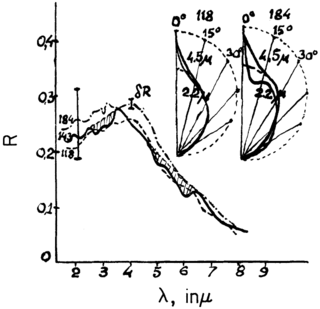
Lunar water is water that is present on the Moon. Diffuse water molecules in low concentrations can persist at the Moon's sunlit surface, as discovered by the SOFIA observatory in 2020. Gradually, water vapor is decomposed by sunlight, leaving hydrogen and oxygen lost to outer space. Scientists have found water ice in the cold, permanently shadowed craters at the Moon's poles. Water molecules are also present in the extremely thin lunar atmosphere.

Space manufacturing is the production of tangible goods beyond Earth. Since most production capabilities are limited to low Earth orbit, the term in-orbit manufacturing is also frequently used.
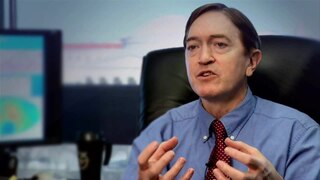
The geology of the Moon is quite different from that of Earth. The Moon lacks a true atmosphere, and the absence of free oxygen and water eliminates erosion due to weather. Instead, the surface is eroded much more slowly through the bombardment of the lunar surface by micrometeorites. It does not have any known form of plate tectonics, it has a lower gravity, and because of its small size, it cooled faster. In addition to impacts, the geomorphology of the lunar surface has been shaped by volcanism, which is now thought to have ended less than 50 million years ago. The Moon is a differentiated body, with a crust, mantle, and core.
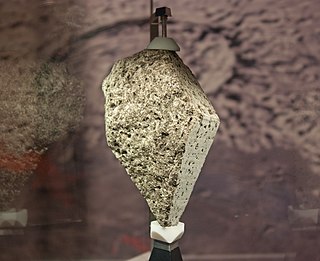
Moon rock or lunar rock is rock originating from Earth's Moon. This includes lunar material collected during the course of human exploration of the Moon, and rock that has been ejected naturally from the Moon's surface and landed on Earth as meteorites.

Joan Elizabeth Higginbotham is an electrical engineer and a former NASA astronaut. She flew aboard Space Shuttle Discovery mission STS-116 as a mission specialist and is the third African American woman to go into space, after Mae Jemison and Stephanie Wilson.

In space exploration, in situ resource utilization (ISRU) is the practice of collection, processing, storing and use of materials found or manufactured on other astronomical objects that replace materials that would otherwise be brought from Earth.

Lunar soil is the fine fraction of lunar regolith found on the surface of the Moon and contributes to the Moon's tenuous atmosphere. Lunar soil differs in its origin and properties significantly from terrestrial soil.
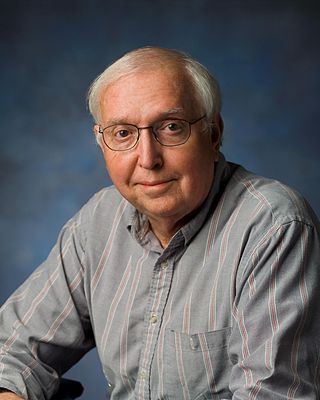
David Stewart McKay was chief scientist for astrobiology at the Johnson Space Center. During the Apollo program, McKay provided geology training to the first men to walk on the Moon in the late 1960s. McKay was the first author of a scientific paper postulating past life on Mars on the basis of evidence in Martian meteorite ALH 84001, which had been found in Antarctica. This paper has become one of the most heavily cited papers in planetary science. The NASA Astrobiology Institute was founded partially as a result of community interest in this paper and related topics. He was a native of Titusville, Pennsylvania.
The Solar System Exploration Research Virtual Institute (SSERVI), originally the NASA Lunar Science Institute, is an organization, established by NASA in 2008, that supplemented and extended existing NASA lunar science programs. Supported by the NASA Science Mission Directorate (SMD) and the Exploration Systems Mission Directorate (ESMD), SSERVI is a NASA program office located at the NASA Ames Research Center and was modeled on the NASA Astrobiology Institute (NAI) with dispersed teams across the nation working together to help lead the agency's research activities related to NASA's human exploration goals. Competitively selected team investigations focused on one or more aspects of lunar science investigations of the Moon, from the Moon, and on the Moon.
Lunarcrete, also known as "mooncrete", an idea first proposed by Larry A. Beyer of the University of Pittsburgh in 1985, is a hypothetical construction aggregate, similar to concrete, formed from lunar regolith, that would reduce the construction costs of building on the Moon. AstroCrete is a more general concept also applicable for Mars.

A lunar regolith simulant is a terrestrial material synthesized in order to approximate the chemical, mechanical, or engineering properties of, and the mineralogy and particle size distributions of, lunar regolith. Lunar regolith simulants are used by researchers who wish to research the materials handling, excavation, transportation, and uses of lunar regolith. Samples of actual lunar regolith are too scarce, and too small, for such research, and have been contaminated by exposure to Earth's atmosphere.

Martian lava tubes are volcanic caverns on Mars that are believed to form as a result of fast-moving, basaltic lava flows associated with shield volcanism. Lava tubes usually form when the external surface of the lava channels cools more quickly and forms a hardened crust over subsurface lava flows. The flow eventually ceases and drains out of the tube, leaving a conduit-shaped void space which is usually several meters below the surface. Lava tubes are typically associated with extremely fluid pahoehoe lava. Gravity on mars is about 38% that of Earth's, allowing Martian lava tubes to be much larger in comparison.
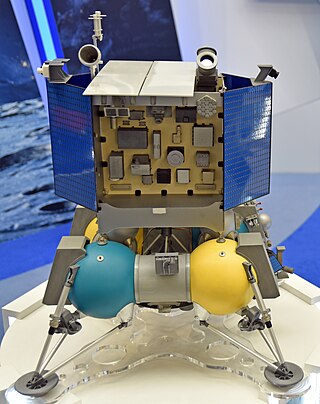
Luna 27 is a planned lunar lander mission by the Roscosmos with collaboration by the European Space Agency (ESA) to send a lander to the South Pole–Aitken basin, an area on the far side of the Moon. Its objective will be to detect and characterise lunar polar volatiles. The mission is a continuation of the Luna-Glob programme.

Resource Prospector is a cancelled mission concept by NASA of a rover that would have performed a survey expedition on a polar region of the Moon. The rover was to attempt to detect and map the location of volatiles such as hydrogen, oxygen and lunar water which could foster more affordable and sustainable human exploration to the Moon, Mars, and other Solar System bodies.

The Swamp Works is a lean-development, rapid innovation environment at NASA's Kennedy Space Center. It was founded in 2012, when four laboratories in the Surface Systems Office were merged into an enlarged facility with a modified philosophy for rapid technology development. Those laboratories are the Granular Mechanics and Regolith Operations Lab, the Electrostatics and Surface Physics Lab, the Applied Chemistry Lab, and the Life Support and Habitation Systems (LSHS) team. The first two of these are located inside the main Swamp Works building, while the other two use the facility although their primary work is located elsewhere. The team developed the Swamp Works operating philosophy from Kelly Johnson's Skunk Works, including the "14 Rules of Management", from the NASA development shops of Wernher von Braun, and from the innovation culture of Silicon Valley. The team prototypes space technologies rapidly to learn early in the process how to write better requirements, enabling them to build better products, rapidly, and at reduced cost. It was named the Swamp Works for similarity with the Skunk Works and the Phantom Works, but branded by the widespread marshes (swamps) on the Cape Canaveral and Merritt Island property of the Kennedy Space Center. The Swamp Works was co-founded by NASA engineers and scientists Jack Fox, Rob Mueller, and Philip Metzger. The logo, a robotic alligator, was designed by Rosie Mueller, a professional designer and the spouse of Rob Mueller.
The World Is Not Enough (WINE) is a US project developing a refuelable steam engine system for spacecraft propulsion. WINE developed a method of extracting volatiles from ice, ice-rich regolith, and hydrated soils and uses it as steam propulsion which allows the spacecraft to refuel multiple times and have an extraordinary long service lifetime. This would allow a single spacecraft to visit multiple asteroids, comets or several landing locations at an icy world such as the Moon, Mars, Pluto, Enceladus, Ganymede, Europa, etc.

The Moon bears substantial natural resources which could be exploited in the future. Potential lunar resources may encompass processable materials such as volatiles and minerals, along with geologic structures such as lava tubes that, together, might enable lunar habitation. The use of resources on the Moon may provide a means of reducing the cost and risk of lunar exploration and beyond.
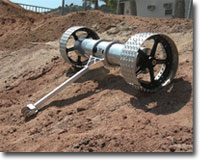
Moon Diver is a proposed lunar mission concept by NASA's Jet Propulsion Laboratory that would employ a robotic lander and a – distant coaxial – two-wheeled rover called Axel to investigate the exposed geological layers on the walls of a deep lunar pit.
Judith A. Kersey is an American engineer. She was the first woman guidance systems engineer at NASA Kennedy Space Center.
















